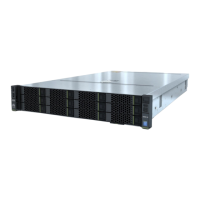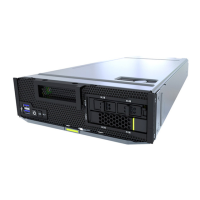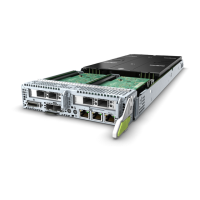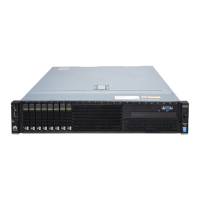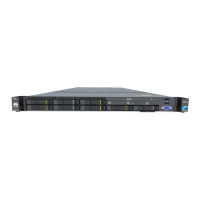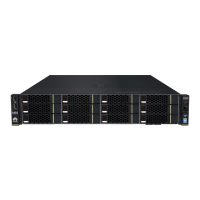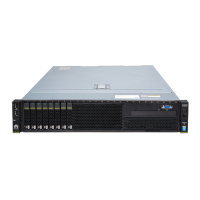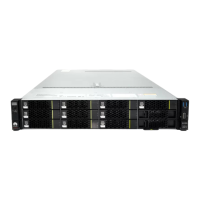Do you have a question about the Huawei FusionServer Pro 2288X V5 and is the answer not in the manual?
Introduces the FusionServer Pro 2288X V5 server and its target applications.
Describes the components and indicators on the server's front.
Details the components and connectors on the server's rear.
Information on various drive configurations and their specifications.
Details CPU support and installation requirements for the server.
Details supported drive configurations and their specifications.
Provides detailed technical specifications for each PCIe slot.
Lists key technical specs like form factor, chipset, processors, and memory.
Guidance on compatible OS and hardware.
General safety guidelines for installation, personal safety, and equipment handling.
Guidelines to prevent electrostatic discharge damage to sensitive components.
Describes methods for grounding to prevent ESD during handling.
Steps to mount the server onto installed guide rails.
Steps to mount the server onto ball bearing rail kits.
General best practices for laying out and securing internal and external cables.
How to power on the server using PSU, front panel button, or iBMC.
Methods for powering off the server gracefully or forcibly.
Lists default IP, username, and password settings for initial configuration.
Steps to change the iBMC user password via WebUI or CLI.
Procedure to change the U-Boot password using the iBMC CLI.
How to configure the iBMC IP address via BIOS or CLI.
Steps to set or change the BIOS administrator password.
Procedures for upgrading server firmware and drivers.
Overview of troubleshooting processes, fault diagnosis, and maintenance.
Step-by-step guide to access the iBMC web interface for management.
How to access the server desktop via virtual console using iBMC.
How to access the server desktop via virtual console using iBMC.
Using the IRC for server desktop access.
Steps to log in via SSH using PuTTY.
Steps to log in via serial port using PuTTY.
Procedures to enter the server's BIOS setup utility.
Overview of the Huawei intelligent Baseboard Management Controller features and functions.
Explanation of the Basic Input/Output System (BIOS) and its role in server operation.
Introduces the FusionServer Pro 2288X V5 server and its target applications.
Describes the components and indicators on the server's front.
Details the components and connectors on the server's rear.
Information on various drive configurations and their specifications.
Details CPU support and installation requirements for the server.
Details supported drive configurations and their specifications.
Provides detailed technical specifications for each PCIe slot.
Lists key technical specs like form factor, chipset, processors, and memory.
Guidance on compatible OS and hardware.
General safety guidelines for installation, personal safety, and equipment handling.
Guidelines to prevent electrostatic discharge damage to sensitive components.
Describes methods for grounding to prevent ESD during handling.
Steps to mount the server onto installed guide rails.
Steps to mount the server onto ball bearing rail kits.
General best practices for laying out and securing internal and external cables.
How to power on the server using PSU, front panel button, or iBMC.
Methods for powering off the server gracefully or forcibly.
Lists default IP, username, and password settings for initial configuration.
Steps to change the iBMC user password via WebUI or CLI.
Procedure to change the U-Boot password using the iBMC CLI.
How to configure the iBMC IP address via BIOS or CLI.
Steps to set or change the BIOS administrator password.
Procedures for upgrading server firmware and drivers.
Overview of troubleshooting processes, fault diagnosis, and maintenance.
Step-by-step guide to access the iBMC web interface for management.
How to access the server desktop via virtual console using iBMC.
How to access the server desktop via virtual console using iBMC.
Using the IRC for server desktop access.
Steps to log in via SSH using PuTTY.
Steps to log in via serial port using PuTTY.
Procedures to enter the server's BIOS setup utility.
Overview of the Huawei intelligent Baseboard Management Controller features and functions.
Explanation of the Basic Input/Output System (BIOS) and its role in server operation.
| Form Factor | 2U Rack |
|---|---|
| Processor | Intel Xeon Scalable processors |
| Max Processors | 2 |
| Memory Slots | 24 |
| Memory | DDR4 |
| Storage | Up to 24 HDD/SSD |
| RAID Support | RAID 0, 1, 5, 10 |
| PCIe Slots | Up to 7 |
| Power Supply | Redundant power supplies |
| Management | iBMC (Intelligent Baseboard Management Controller) |
